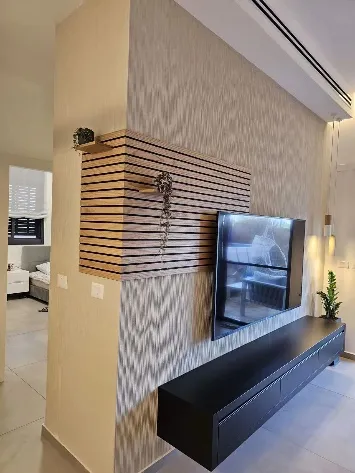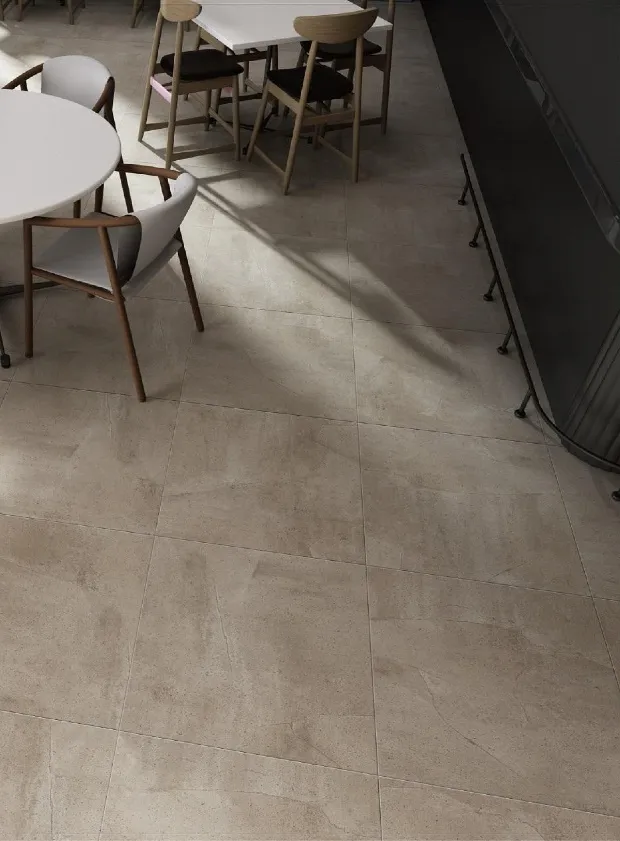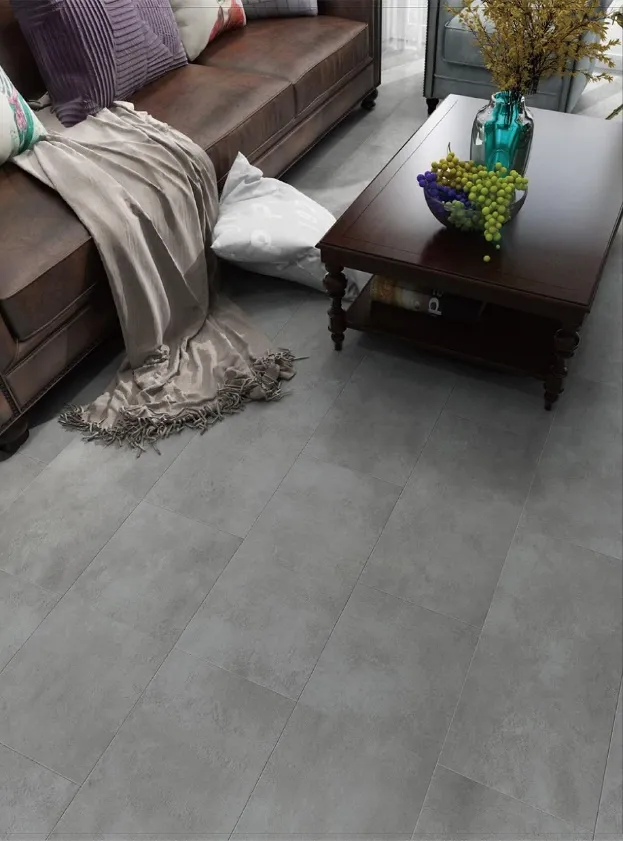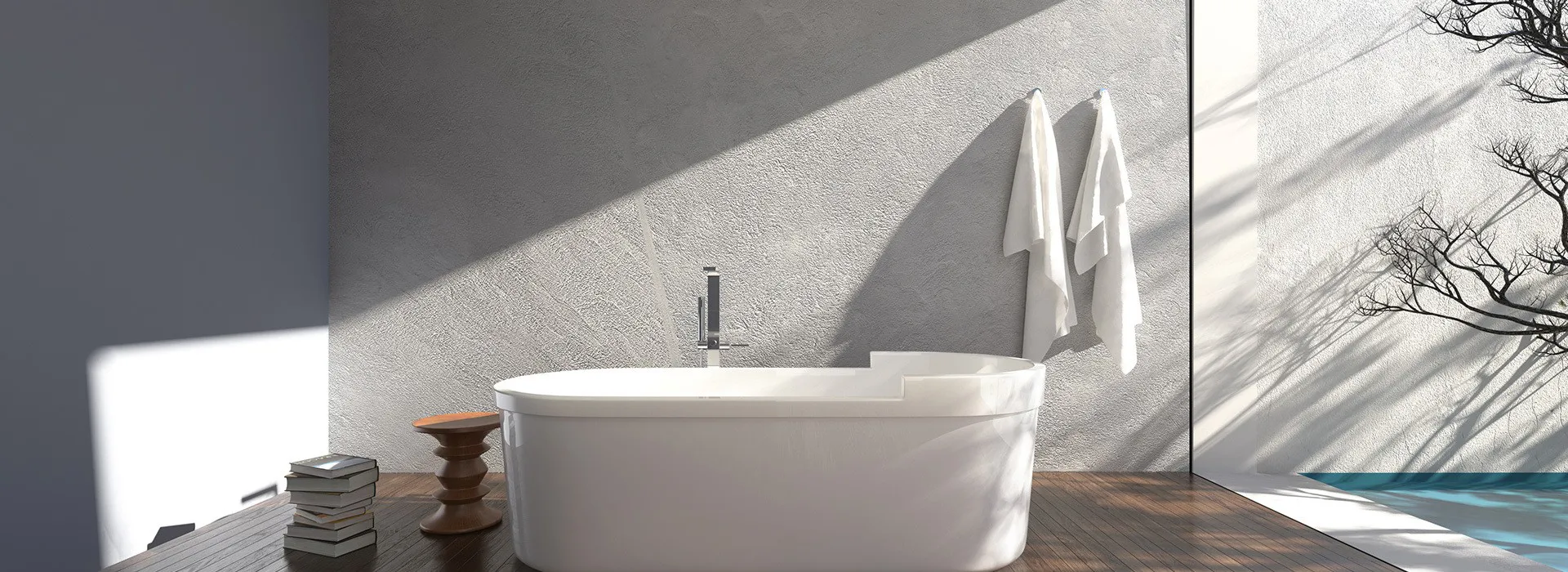
FAQ
PEX Pipe Fittings: Crimp vs Push-to-Connect—Supplier Comparisons
Release time : September 27 2025
Related Product
PEX Pipe Fittings
PEX Pipe Fittings
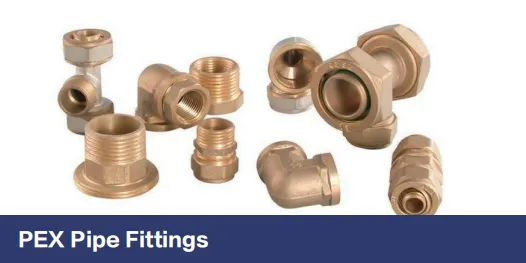
Let's talk about something that might not sound glamorous at first, but plays a huge role in keeping our homes and businesses running smoothly: plumbing. Specifically, the unsung heroes behind modern plumbing systems—PEX pipes and their fittings. If you've ever tackled a bathroom remodel, helped a friend fix a leaky pipe, or even just watched a home improvement show, you've probably heard the term "PEX" thrown around. It's become the go-to material for plumbers and DIYers alike, and for good reason. But here's where things get tricky: when it comes to connecting those flexible PEX pipes, there are two main players in the game—crimp fittings and push-to-connect fittings. And choosing between them? That's a decision that can make or break your project, not to mention your peace of mind.
Maybe you've stood in the aisle of a hardware store, staring at a wall of metal rings, plastic connectors, and confusing tools, wondering, "Which one do I need?" Or perhaps you've heard horror stories from a neighbor whose "easy" push-to-connect fitting sprung a leak three months later, costing hundreds in water damage. On the flip side, a contractor friend might swear by crimp fittings, calling them the "only reliable choice" for long-term projects. The truth is, both have their place—but knowing when to use each, and where to buy them, is key.
In this guide, we're diving deep into the world of PEX pipe fittings. We'll break down how crimp and push-to-connect systems work, weigh their pros and cons, and even walk you through real-world scenarios where one might outshine the other. But we won't stop there. Because even the best fitting is only as good as the supplier who provides it. That's why we'll also compare top PEX pipe and fitting suppliers, helping you find a partner you can trust—whether you're building a new home in Riyadh, renovating a restaurant in Jeddah, or just fixing a leak under your kitchen sink.
Let's start with the basics: what exactly is PEX, and why has it become so popular?
What is PEX Pipe, Anyway?
PEX, short for cross-linked polyethylene, is a type of plastic pipe that's revolutionized plumbing since it hit the scene in the 1980s. Unlike rigid copper or galvanized steel pipes, PEX is flexible—think of it like a really tough garden hose—that can bend around corners, fit into tight spaces, and even expand slightly if frozen (though we still don't recommend letting your pipes freeze!). This flexibility alone makes it a favorite among contractors, especially in older homes where walls are already closed up and snaking a rigid pipe would mean tearing everything apart.
But PEX isn't just flexible; it's also durable. It resists corrosion, scale buildup, and chemical damage from common household cleaners, which means it lasts longer than many traditional materials. Plus, it's lightweight, so carrying a 100-foot roll up a flight of stairs is a lot easier than hauling heavy copper pipes. No wonder it's now the top choice for residential water lines, radiant heating systems, and even commercial projects like hotels and hospitals.
Now, PEX pipes come in three main types—PEX-A, PEX-B, and PEX-C—but for most homeowners and small-scale projects, the differences are minimal. What *does* matter is how you connect those pipes together. And that's where crimp and push-to-connect fittings enter the picture. These fittings are the "joints" of your plumbing system, the parts that keep water flowing where it should and prevent leaks where it shouldn't. Choosing the right one isn't just about installation ease; it's about safety, cost, and long-term reliability.
Let's start with the tried-and-true option: crimp fittings.
Crimp Fittings: The Old Reliable
If you've ever watched a professional plumber work on a new construction site, chances are you've seen them use crimp fittings. They've been around for decades, and they're the gold standard for many in the industry. But how do they actually work?
How Crimp Fittings Work
Crimp fittings are simple in concept: they use a metal ring (usually copper or stainless steel) and a crimping tool to create a tight seal between the PEX pipe and the fitting. Here's a step-by-step breakdown of the process:
1. **Cut the PEX pipe cleanly**: Use a sharp PEX cutter to make a straight, even cut—any jagged edges can ruin the seal.
2. **Slide the crimp ring onto the pipe**: Make sure it's positioned about 1/4 inch from the end of the pipe.
3. **insert the fitting**: Push the PEX pipe onto the fitting's barb until it hits the shoulder of the fitting (you should feel a slight resistance when it's fully seated).
4. **Position the crimp tool**: Place the tool's jaws around the crimp ring, making sure the ring is centered over the barb.
5. **Crimp the ring**: Squeeze the tool firmly until the jaws meet. This compresses the ring onto the pipe and fitting, creating a watertight seal.
It sounds straightforward, but there's a learning curve. If you don't crimp hard enough, the ring might loosen over time; crimp too hard, and you could crack the pipe or damage the fitting. That's why pros invest in quality crimp tools—often with ratcheting mechanisms to ensure consistent pressure—and practice on scrap pipe before tackling a real project.
The Pros of Crimp Fittings
So, why do so many professionals swear by crimp fittings? Let's start with reliability. When installed correctly, crimp fittings create a permanent, leak-proof seal that can last for decades. The metal ring forms a mechanical bond with the pipe, meaning it won't loosen or degrade over time—even under high water pressure or temperature fluctuations (PEX can handle hot water up to 200°F, by the way).
Cost is another big advantage. Crimp rings and fittings are generally cheaper than push-to-connect options, especially when buying in bulk. For large projects—like plumbing an entire house or a commercial building—those savings add up fast. A 100-pack of 1/2-inch crimp rings might cost $20, while the same number of push-to-connect fittings could set you back $100 or more.
They're also widely available. Most hardware stores, home improvement centers, and building material suppliers stock crimp fittings, so you won't have to hunt down a specialty shop if you run out mid-project. And because they've been around so long, there's a wealth of tutorials, how-to videos, and expert advice available if you get stuck.
The Cons of Crimp Fittings
Of course, crimp fittings aren't perfect. The biggest downside? They require special tools. A basic crimp tool can cost $50–$100, and professional-grade ones (which are more reliable) can be upwards of $200. If you're a DIYer who only does plumbing work once every few years, that's a significant investment for a tool you might rarely use.
There's also the risk of human error. Even experienced plumbers can botch a crimp if they're in a hurry or the tool is misaligned. A poorly crimped ring is a ticking time bomb—you might not notice a leak right away, but over time, water can seep out, leading to mold, water damage, or higher utility bills. That's why many pros use a "go/no-go" gauge after crimping to check if the ring is properly compressed.
Installation is also slower compared to push-to-connect. Each fitting requires measuring, sliding on the ring, inserting the fitting, positioning the tool, and crimping—steps that add up when you're doing dozens of connections in a day. For a small repair, that might not matter, but for a full-house plumbing job, it could extend your timeline by hours or even days.
Real-Life Example:
Mike, a contractor in Riyadh, was hired to plumb a 10-unit apartment building. He chose crimp fittings for the project, citing cost and reliability. "With 200+ connections to make, push-to-connect would've doubled our material costs," he says. "We invested in a good crimp tool, trained the crew, and finished a day ahead of schedule. Three years later, no leaks—knock on wood."
Push-to-Connect Fittings: The "Easy" Option
Now, let's talk about the new kid on the block (or at least the newer kid): push-to-connect fittings. Also called "push-fit" or "quick-connect" fittings, they've exploded in popularity over the past decade, thanks to their promise of "no tools, no hassle" installation. But do they live up to the hype?
How Push-to-Connect Fittings Work
Push-to-connect fittings are designed for simplicity. They have a built-in O-ring (or two) and a metal gripping mechanism that locks onto the PEX pipe when inserted. Here's how easy it is:
1. **Cut the PEX pipe cleanly**: Same as with crimp fittings—straight cuts are a must.
2. **Deburr the pipe**: Use a deburring tool to smooth any rough edges (this prevents damaging the O-ring).
3. **Mark the insertion depth**: Most push-to-connect fittings have a mark on the side indicating how far the pipe should go in (usually 1/2 to 3/4 inch).
4. **Push the pipe into the fitting**: Apply firm, steady pressure until the pipe hits the stop inside the fitting. You'll often hear a "click" when it's fully seated.
5. **Give it a tug**: Pull gently on the pipe to make sure it's locked in place. If it comes out, you didn't push it far enough.
That's it. No rings, no tools, no crimping. It's so simple that even someone with zero plumbing experience can do it in under a minute. No wonder DIYers love them for small repairs—like fixing a leaky faucet line or adding a new water line to a refrigerator.
The Pros of Push-to-Connect Fittings
The biggest advantage of push-to-connect is speed. For a homeowner who needs to stop a leak fast, being able to make a connection in 30 seconds instead of 5 minutes is a game-changer. Contractors also use them for emergency repairs or when working in tight spaces where a crimp tool won't fit—like under a sink or behind a toilet.
No special tools mean lower upfront costs for occasional users. If you only need to fix a single fitting, you can buy one push-to-connect fitting for $5–$10 and be done, no need to splurge on a crimp tool. This accessibility has made them a staple in many DIY toolkits.
They're also reusable in some cases. If you need to disconnect a push-to-connect fitting (say, to move a pipe during a renovation), you can use a special release tool to remove the pipe without damaging the fitting. With crimp fittings, once the ring is crimped, it's permanent—you have to cut the pipe and start over.
Finally, there's less room for user error (though not zero). As long as you cut the pipe straight, deburr it, and push it all the way in, the O-ring and gripping teeth do the rest. No worrying about over-crimping or under-crimping—just a secure seal.
The Cons of Push-to-Connect Fittings
The biggest downside? Cost. Push-to-connect fittings are significantly more expensive than crimp fittings. A single 1/2-inch push-to-connect fitting can cost $4–$8, while a crimp fitting and ring might cost $1–$2 total. For a large project, that difference is massive. For example, plumbing a 2,000-square-foot home might require 50 fittings—crimp would cost ~$50, push-to-connect ~$250.
They're also bulkier than crimp fittings. The plastic body of a push-to-connect fitting takes up more space, which can be an issue in tight plumbing chases or walls with limited clearance. In some cases, you might have to notch out more wood or drywall to fit them, which adds time and labor.
Long-term durability is another concern, though modern push-to-connect fittings have come a long way. Early models had issues with O-rings degrading over time, especially in hot water lines, but most reputable brands now use high-quality materials like EPDM rubber that can withstand temperature fluctuations. Still, some plumbers remain skeptical, preferring the mechanical bond of a crimp ring over a rubber O-ring.
Finally, availability can be spotty in some regions. While major cities like Riyadh or Jeddah have plenty of suppliers, smaller towns might only stock basic crimp fittings, making push-to-connect harder to find in an emergency.
Real-Life Example:
Sarah, a homeowner in Jeddah, woke up to a leak under her kitchen sink. "I'm not a plumber, but I watched a YouTube video on push-to-connect fittings," she says. "I ran to the hardware store, bought a fitting for 15 SAR, and fixed it in 10 minutes. No tools, no mess—saved me a call to the plumber and a weekend of stress."
Crimp vs. Push-to-Connect: Head-to-Head Comparison
Now that we've broken down how each type works, let's compare them side by side to help you decide which is right for your project.
So, which should you choose? If you're a professional contractor working on a big project, crimp fittings are probably the way to go—they're cheaper, reliable, and you'll recoup the tool cost quickly. If you're a homeowner fixing a leak or a DIYer with limited experience, push-to-connect is the safer, faster option. For mixed projects (like a home renovation with both new construction and repairs), many people use a combination of both—crimp for the main lines, push-to-connect for tricky spots.
But here's the thing: even the best fitting design won't matter if you buy from a shoddy supplier. That's why choosing a reputable PEX pipe and fitting supplier is just as important as choosing the right fitting type.
| Factor | Crimp Fittings | Push-to-Connect Fittings |
|---|---|---|
| Cost per Fitting | $1–$2 (fitting + ring) | $4–$10 per fitting |
| Tools Required | Crimp tool, PEX cutter, deburr tool, go/no-go gauge (optional) | PEX cutter, deburr tool, release tool (for disconnection, optional) |
| Installation Time | Slower (30–60 seconds per fitting) | Faster (10–30 seconds per fitting) |
| Learning Curve | Steeper (requires practice to crimp correctly) | gentler (easy for beginners) |
| Durability | Excellent (mechanical seal, long-term reliability) | Very good (modern O-rings, but some skepticism about long-term use) |
| Reusability | Permanent (cannot be reused) | Reusable (with release tool) |
| Best For | Large projects, new construction, commercial buildings, budget-focused jobs | Small repairs, DIY projects, tight spaces, emergency fixes |
| Availability | Widely available globally | Common in urban areas, less so in remote regions |
Choosing a PEX Pipe and Fitting Supplier: What to Look For
You've decided whether to go with crimp or push-to-connect—now, where do you buy them? Not all suppliers are created equal, and cutting corners on quality can lead to big problems down the line. Here are the key factors to consider when choosing a supplier:
1. Quality and Certifications
The most important thing is that the PEX fittings meet industry standards. Look for suppliers who carry products certified by organizations like ASTM International (ASTM F1807 for PEX fittings) or NSF International (NSF/ANSI 61 for drinking water safety). These certifications ensure the fittings are tested for durability, pressure resistance, and chemical safety—critical for avoiding leaks or contamination.
Avoid "no-name" brands from uncertified suppliers, even if they're cheaper. A $1 crimp fitting that fails is far more expensive than a $2 certified one that lasts 50 years.
2. Product Range
A good supplier should offer both crimp and push-to-connect fittings, as well as a variety of sizes (1/2 inch, 3/4 inch, 1 inch) to meet different project needs. They should also stock related products like PEX pipes, cutters, deburr tools, release tools, and gauges—so you can get everything in one place.
3. Target Market
Some suppliers specialize in residential building materials, while others focus on commercial projects. If you're a homeowner, a supplier that caters to DIYers might offer better customer service and smaller quantities. If you're a contractor, a commercial-focused supplier might have bulk pricing and faster delivery for large orders.
4. Regional Availability
If you're based in Saudi Arabia, working with a local supplier (or one with a strong regional presence) means faster delivery, lower shipping costs, and easier returns if there's an issue. Look for suppliers with warehouses in major cities like Riyadh, Jeddah, or Dammam to ensure timely access to products.
5. Customer Support
Even experienced plumbers have questions. A good supplier should have knowledgeable staff who can help you choose the right fittings, explain installation best practices, or troubleshoot issues. Online resources like guides, videos, and FAQs are a plus, too.
6. Reputation and Reviews
Check online reviews or ask fellow contractors for recommendations. A supplier with a history of positive feedback is more likely to stand behind their products and resolve problems quickly if they arise.
Now, let's take a look at some top PEX pipe and fitting suppliers that meet these criteria, including options for both residential and commercial projects in Saudi Arabia.
Top PEX Pipe and Fitting Suppliers to Consider
To help you narrow down your choices, we've profiled four leading suppliers known for their quality PEX products, reliable service, and commitment to customer satisfaction.
To make comparing these suppliers easier, here's a quick overview table:
1. Arabian Building Solutions (ABS)
Focus:
Residential and commercial building materials supplier, with a strong presence in Saudi Arabia.
PEX Offerings: Both crimp and push-to-connect fittings (1/2 inch to 1 inch), PEX-A and PEX-B pipes, crimp tools, release tools, and installation kits. All products are ASTM F1807 and NSF/ANSI 61 certified.
Target Market: Contractors, developers, and DIY homeowners. They offer bulk pricing for commercial projects and retail packaging for small repairs.
Regional Presence: Warehouses in Riyadh, Jeddah, and Dammam, with next-day delivery to most major cities in Saudi Arabia.
Customer Support: Technical hotline staffed by certified plumbers, free installation workshops for contractors, and online tutorials for homeowners.
Unique Selling Point: Specializes in "one-stop" solutions—beyond PEX, they also supply other building materials like flooring, wall panels, and sanitary fixtures, making them a convenient choice for full-project sourcing.
PEX Offerings: Both crimp and push-to-connect fittings (1/2 inch to 1 inch), PEX-A and PEX-B pipes, crimp tools, release tools, and installation kits. All products are ASTM F1807 and NSF/ANSI 61 certified.
Target Market: Contractors, developers, and DIY homeowners. They offer bulk pricing for commercial projects and retail packaging for small repairs.
Regional Presence: Warehouses in Riyadh, Jeddah, and Dammam, with next-day delivery to most major cities in Saudi Arabia.
Customer Support: Technical hotline staffed by certified plumbers, free installation workshops for contractors, and online tutorials for homeowners.
Unique Selling Point: Specializes in "one-stop" solutions—beyond PEX, they also supply other building materials like flooring, wall panels, and sanitary fixtures, making them a convenient choice for full-project sourcing.
2. Global Plumbing Supplies (GPS)
Focus:
Commercial plumbing solutions, with an international footprint including Saudi Arabia.
PEX Offerings: Industrial-grade crimp fittings (up to 2 inches), push-to-connect fittings for emergency repairs, and PEX pipes rated for high-pressure commercial systems. All products meet ASTM and ISO standards.
Target Market: Large contractors, hospitals, hotels, and government projects. They do not sell to individual homeowners but work with trade professionals.
Regional Presence: Partnered with local distributors in Saudi Arabia, with weekly shipments to Riyadh and Jeddah.
Customer Support: Dedicated account managers for commercial clients, on-site technical support for large projects, and extended warranties (up to 10 years) on bulk orders.
Unique Selling Point: Known for durability—their crimp fittings are tested to withstand extreme temperatures and pressure, making them ideal for Saudi Arabia's hot climate and high-rise buildings.
PEX Offerings: Industrial-grade crimp fittings (up to 2 inches), push-to-connect fittings for emergency repairs, and PEX pipes rated for high-pressure commercial systems. All products meet ASTM and ISO standards.
Target Market: Large contractors, hospitals, hotels, and government projects. They do not sell to individual homeowners but work with trade professionals.
Regional Presence: Partnered with local distributors in Saudi Arabia, with weekly shipments to Riyadh and Jeddah.
Customer Support: Dedicated account managers for commercial clients, on-site technical support for large projects, and extended warranties (up to 10 years) on bulk orders.
Unique Selling Point: Known for durability—their crimp fittings are tested to withstand extreme temperatures and pressure, making them ideal for Saudi Arabia's hot climate and high-rise buildings.
3. HomeBuild Essentials (HBE)
Focus:
DIY and residential building materials, with a focus on affordability and accessibility.
PEX Offerings: Budget-friendly crimp fittings, push-to-connect fittings in small packs (1–5 pieces), basic PEX pipes, and beginner-friendly installation tools (like entry-level crimp tools and cutter sets).
Target Market: Homeowners, small-scale renovators, and handymen. They have retail stores in Riyadh and Jeddah with staff trained to assist DIYers.
Regional Presence: Retail stores in Saudi Arabia's major cities, plus online ordering with same-day delivery in metro areas.
Customer Support: In-store demos, step-by-step guides for common projects (like "how to fix a leaky PEX fitting"), and a 30-day return policy on unused products.
Unique Selling Point: Makes PEX accessible to beginners—their "DIY PEX Starter Kit" includes everything you need for small repairs (5 push-to-connect fittings, a cutter, and a deburr tool) for under 100 SAR.
PEX Offerings: Budget-friendly crimp fittings, push-to-connect fittings in small packs (1–5 pieces), basic PEX pipes, and beginner-friendly installation tools (like entry-level crimp tools and cutter sets).
Target Market: Homeowners, small-scale renovators, and handymen. They have retail stores in Riyadh and Jeddah with staff trained to assist DIYers.
Regional Presence: Retail stores in Saudi Arabia's major cities, plus online ordering with same-day delivery in metro areas.
Customer Support: In-store demos, step-by-step guides for common projects (like "how to fix a leaky PEX fitting"), and a 30-day return policy on unused products.
Unique Selling Point: Makes PEX accessible to beginners—their "DIY PEX Starter Kit" includes everything you need for small repairs (5 push-to-connect fittings, a cutter, and a deburr tool) for under 100 SAR.
4. ProFlow Systems
Focus:
Specialized PEX pipe and fitting solutions for both residential and commercial use.
PEX Offerings: Premium push-to-connect fittings with brass bodies (more durable than plastic), crimp fittings with stainless steel rings (resistant to corrosion), and color-coded PEX pipes (red for hot water, blue for cold). All products are certified for use in Saudi Arabia's plumbing codes.
Target Market: Discriminating homeowners, luxury home builders, and commercial projects where quality is prioritized over cost.
Regional Presence: Online-only in Saudi Arabia, with free shipping on orders over 500 SAR and a 24-hour customer service chat.
Customer Support: Expert advice via phone or chat, detailed product specs and installation videos on their website, and a lifetime warranty on push-to-connect fittings.
Unique Selling Point: Innovation—their push-to-connect fittings feature a "leak indicator" that turns red if water seeps out, allowing for quick detection of improper installations.
PEX Offerings: Premium push-to-connect fittings with brass bodies (more durable than plastic), crimp fittings with stainless steel rings (resistant to corrosion), and color-coded PEX pipes (red for hot water, blue for cold). All products are certified for use in Saudi Arabia's plumbing codes.
Target Market: Discriminating homeowners, luxury home builders, and commercial projects where quality is prioritized over cost.
Regional Presence: Online-only in Saudi Arabia, with free shipping on orders over 500 SAR and a 24-hour customer service chat.
Customer Support: Expert advice via phone or chat, detailed product specs and installation videos on their website, and a lifetime warranty on push-to-connect fittings.
Unique Selling Point: Innovation—their push-to-connect fittings feature a "leak indicator" that turns red if water seeps out, allowing for quick detection of improper installations.
| Supplier | PEX Fitting Types | Certifications | Target Market | Saudi Arabia Availability | Price Range | Best For |
|---|---|---|---|---|---|---|
| Arabian Building Solutions | Crimp, Push-to-Connect | ASTM, NSF | Residential, Commercial | Warehouses in Riyadh, Jeddah, Dammam | Mid-Range | One-stop project sourcing |
| Global Plumbing Supplies | Crimp (Industrial), Push-to-Connect (Emergency) | ASTM, ISO | Commercial Only | Distributors in Riyadh, Jeddah | High | Large commercial projects |
| HomeBuild Essentials | Crimp, Push-to-Connect (Small Packs) | Basic ASTM | DIY Homeowners | Retail Stores, Online Delivery | Budget | Small repairs, beginner projects |
| ProFlow Systems | Premium Push-to-Connect, Crimp | ASTM, Local Saudi Codes | Luxury Residential, Quality-Focused Commercial | Online, Free Shipping | Premium | High-end homes, leak prevention |
Common Mistakes to Avoid When Choosing PEX Fittings and Suppliers
Even with the right information, it's easy to make missteps when selecting PEX fittings or suppliers. Here are some common pitfalls to watch out for:
1. Choosing Price Over Quality
It's tempting to buy the cheapest fittings you can find, but low-quality products often lead to leaks, which cost far more to fix than the savings on the initial purchase. Always prioritize certified fittings from reputable suppliers—your wallet (and sanity) will thank you later.
2. Ignoring Regional Climate
Saudi Arabia's hot, dry climate can affect plumbing materials. Make sure your supplier's PEX fittings are rated for high temperatures (up to 95°C for hot water lines) and UV resistance if they'll be exposed to sunlight during installation.
3. Using the Wrong Fitting Type for the Job
Don't use push-to-connect fittings for a main water line in a commercial building just because they're easy—crimp fittings are more reliable for high-pressure, long-term use. Conversely, don't struggle with a crimp tool in a tight space when a push-to-connect fitting would work better.
4. Skipping Supplier Research
A supplier with a flashy website doesn't always deliver on promises. Check reviews, ask for references, and verify certifications before placing a large order. If a deal seems too good to be true, it probably is.
5. Improper Installation (Even With Good Fittings)
The best fitting in the world won't work if installed incorrectly. Take the time to learn proper techniques, watch tutorials, or hire a professional if you're unsure. Remember: measure twice, cut once, and always check your work.
Final Thoughts: Crimp, Push-to-Connect, and Finding Your Perfect Supplier
At the end of the day, both crimp and push-to-connect fittings have their strengths. Crimp fittings are the workhorses—reliable, cost-effective, and ideal for large projects. Push-to-connect fittings are the quick fixers—easy, tool-free, and perfect for repairs or tight spaces. The key is to match the fitting type to your project's needs, budget, and skill level.
But no matter which fitting you choose, the supplier you buy from is just as important. A good supplier doesn't just sell products—they provide peace of mind. They stand behind their fittings with certifications, support, and reliable delivery, ensuring your plumbing system works today and for years to come.
Whether you're a contractor in Riyadh plumbing a skyscraper, a homeowner in Jeddah fixing a leak, or a developer building a new residential complex, take the time to research your options. Compare suppliers, ask questions, and don't be afraid to invest in quality. After all, when it comes to plumbing, the right choices now prevent headaches (and leaks) later.
So, what's next? Grab your PEX cutter, pick your fitting, and start connecting—with confidence.
Tags:
Recommended News
March 03 2025
March 03 2025
November 11 2021
November 11 2021
November 11 2021
November 11 2021
November 11 2021
January 01 2022
July 07 2022
March 03 2025
Get In Touch with us
Hey there! Your message matters! It'll go straight into our CRM system. Expect a one-on-one reply from our CS within 7×24 hours. We value your feedback. Fill in the box and share your thoughts!
Recommend Products
X


